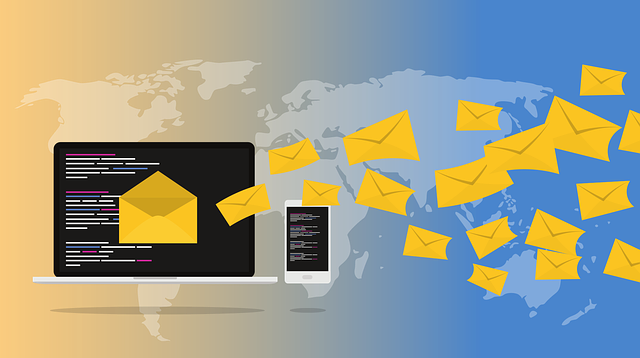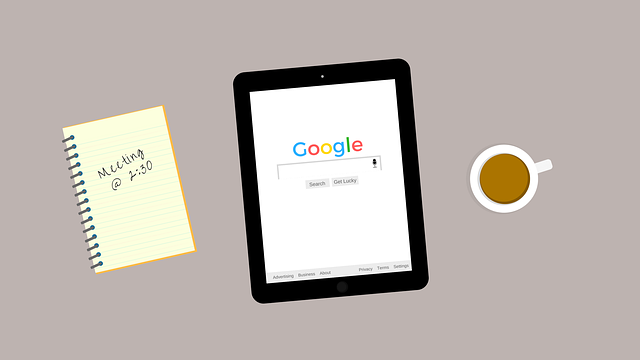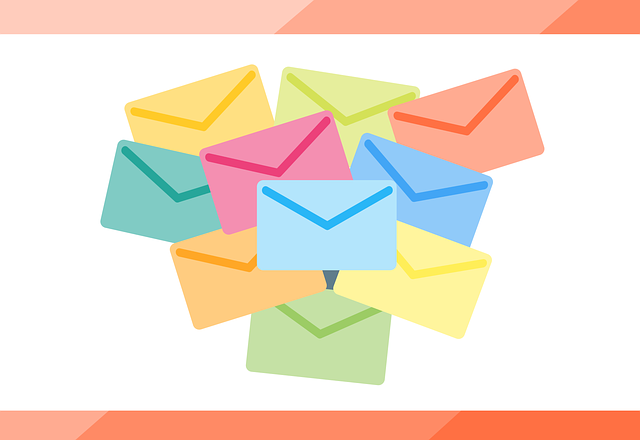Are you launching a new product and looking for a way to make a big impact? One of the most effective strategies is to segment your email list for targeted product launch campaigns.
By dividing your audience into specific groups based on their interests, preferences, and behaviors, you can tailor your email campaigns to deliver personalized and compelling content that resonates with each segment.
In this article, we will show you how to effectively segment your email list for targeted product launch campaigns. You will learn how to understand your audience, create targeted segments, personalize your email campaigns, craft compelling email content, test and optimize your campaigns, and measure results to make necessary adjustments.
With these strategies, you can maximize the impact of your product launch and ensure that your emails are reaching the right people at the right time. So let’s dive in and start segmenting your email list for success!
Key Takeaways
- Segmenting your email list based on interests, preferences, and behaviors allows for personalized and compelling content.
- Thorough market research and analyzing customer data provides valuable insights for creating targeted segments.
- Grouping subscribers by demographics and location creates a sense of community and allows for tailored campaigns.
- Personalizing email campaigns, testing and optimizing them, and measuring results are crucial for maximum impact in targeted product launch campaigns.
Understand Your Audience
Understanding your audience is essential for effectively segmenting your email list and tailoring targeted product launch campaigns to cater to their specific needs and preferences. To accomplish this, start by conducting thorough market research to gain valuable insights into your customers’ demographics, behaviors, and preferences. This will help you understand who your audience is and what they’re looking for in a product.
Additionally, analyzing customer data such as purchase history and engagement patterns can provide valuable information on their preferences and interests. By understanding your audience, you can create targeted segments that’ll allow you to send highly relevant and personalized emails, increasing the chances of conversion and engagement.
So, let’s move on to the next section and learn how to create these targeted segments.
Create Targeted Segments
To create targeted segments for your email list, start by segmenting based on interests and preferences. By understanding what your audience is interested in, you can tailor your product launch campaigns to their specific needs and desires.
Additionally, grouping your subscribers by demographics and location can help you create more personalized and relevant content, ensuring higher engagement and conversion rates.
So, take the time to analyze your audience and create targeted segments that’ll maximize the impact of your email marketing campaigns.
Segment based on interests and preferences
By identifying the different interests and preferences of your subscribers, you can effectively segment your email list for targeted product launch campaigns. This type of segmentation is known as behavioral and psychographic segmentation.
By analyzing your subscribers’ behavior and understanding their motivations and preferences, you can create segments that are more likely to engage with your product launch campaigns. Here are five ways to segment based on interests and preferences:
- Segment based on past purchases or browsing history.
- Segment based on engagement levels, such as frequent openers or clickers.
- Segment based on preferences, such as preferred content topics or formats.
- Segment based on demographic information, such as age or gender.
- Segment based on psychographic traits, such as values or lifestyle.
Segmenting your email list in this way allows you to tailor your product launch campaigns to specific segments, increasing the chances of success.
In the next section, we’ll discuss how to group your subscribers by demographics and location.
Group by demographics and location
Imagine a world where your subscribers aren’t just faceless names on a screen, but vibrant individuals with unique stories and experiences. Grouping them by demographics and location allows you to tap into the power of their collective identity, creating a community that feels seen and understood.
Segmenting your email list based on demographics, such as age, gender, and location, as well as factors like income and occupation, helps you tailor your product launch campaigns to specific groups. For example, if you’re launching a new line of winter clothing, you can send targeted emails to subscribers in colder regions, highlighting the warmth and durability of your products.
Additionally, segmenting by purchase history and behavior allows you to identify your most loyal customers and offer them exclusive promotions or rewards. By grouping your subscribers based on demographics and location, you can personalize your email campaigns to better meet their needs and interests.
Personalize Your Email Campaigns
Get ready to connect with your audience on a deeper level by personalizing your email campaigns! By implementing email customization techniques, you can tailor your messages to individual subscribers, increasing engagement and driving conversions. Personalized email marketing offers numerous benefits, including higher open rates, click-through rates, and customer satisfaction.
To effectively personalize your email campaigns, consider segmenting your audience based on demographics, location, and past purchase behavior. Use this information to create targeted email content that resonates with each segment. Incorporate dynamic content, such as personalized product recommendations or exclusive offers, to make each email feel unique and relevant to the recipient.
Table:
| Segment | Personalization Techniques | Example |
|---|---|---|
| Demographics | Use recipient’s name in the subject line | "Hey [Name], check out our latest collection!" |
| Location | Customize email content based on local events or weather | "Don’t let the rain stop you from shopping! Stay dry with our rainy day essentials." |
| Past Purchase Behavior | Recommend products based on previous purchases | "Based on your recent purchase, you might also like these related items." |
Crafting compelling email content is the next step in creating successful campaigns that drive results. Engage your audience by telling a story, showcasing the benefits of your product, and providing a clear call to action.
Craft Compelling Email Content
Create captivating emails that captivate your audience with compelling content. To maximize customer engagement, it’s crucial to craft email content that grabs attention and keeps readers hooked. Here are five tips to help you create irresistible email content:
-
Personalize your emails: Address your subscribers by their names and tailor the content to their preferences and interests.
-
Use eye-catching visuals: Incorporate visually appealing elements like images, videos, and infographics to make your emails more engaging.
-
Write compelling subject lines: Grab attention with intriguing subject lines that entice readers to open your emails.
-
Keep it concise: Be concise and get straight to the point to hold your readers’ attention and provide value quickly.
-
Include a clear call-to-action: Guide your readers on what action to take next, whether it’s making a purchase or signing up for an event.
By implementing these strategies, you can create email content that resonates with your audience and drives results.
In the next section, we’ll explore how to test and optimize your campaigns for maximum impact.
Test and Optimize Your Campaigns
To truly maximize the impact of your email campaigns, it’s important to continuously test and optimize your strategies for optimal results.
One crucial aspect of this process is email list segmentation. By dividing your subscribers into smaller, more targeted groups based on their demographics, interests, or behaviors, you can tailor your campaigns to resonate with each segment. This allows you to deliver more personalized and relevant content, increasing engagement and conversion rates.
Additionally, segmenting your email list enables you to gather valuable data on the performance of different segments, which can inform future optimizations. By regularly analyzing metrics such as open rates, click-through rates, and conversion rates, you can identify areas for improvement and adjust your campaigns accordingly.
This ongoing process of testing, optimizing, and measuring results will help you refine your email marketing strategies and achieve better outcomes.
Measure Results and Adjust
By continuously analyzing and adjusting your email marketing strategies based on valuable data and metrics, you can refine your campaigns and achieve even better outcomes.
Tracking progress and measuring results is crucial in improving performance. Use email marketing software to gather data on open rates, click-through rates, conversions, and other important metrics. Analyze this data to identify trends, patterns, and areas for improvement.
For example, if you notice that a certain segment of your email list consistently has a higher open rate, you can tailor your campaigns to target that specific segment more effectively. Similarly, if a particular campaign is not performing well, you can make adjustments based on the data to optimize its performance.
By regularly measuring results and making necessary adjustments, you can maximize the impact of your email campaigns and drive better results.
Frequently Asked Questions
How can I determine the best time to send my targeted email campaigns?
To determine the best time to send your targeted email campaigns, follow these best practices for optimal email deliverability.
Investigate the truth behind the theory that states different times of the day or week yield higher engagement rates. Use data analytics to test and analyze open rates, click-through rates, and conversions at different times.
This will help you identify the most effective timing for your audience, ensuring your emails reach them at the right moment for maximum impact.
What are some effective strategies for growing my email list before launching a product?
To grow your email list before launching a product, focus on list building techniques and maximizing subscriber engagement.
Offer valuable content and incentives to encourage sign-ups, such as exclusive discounts or free resources.
Utilize lead magnets like ebooks or webinars to capture email addresses.
Leverage social media platforms and collaborations with influencers to reach a wider audience.
Regularly communicate with your subscribers, providing relevant and personalized content to cultivate their interest and loyalty.
Is it necessary to create different email content for each segment, or can I reuse the same content with minor modifications?
Email personalization and content customization are crucial for successful targeted product launch campaigns. While it may be tempting to reuse the same content with minor modifications for each segment, it’s highly recommended to create different email content for each segment.
By tailoring your message to the specific needs and interests of each segment, you can significantly increase engagement and conversion rates. This level of personalization shows your audience that you understand their unique needs and adds value to their experience, ultimately driving better results for your campaign.
How often should I test and optimize my email campaigns to ensure optimal results?
You can’t afford to sit back and relax when it comes to email campaigns. To achieve optimal results, you should regularly test and optimize your campaigns.
By doing so, you can identify what works and what doesn’t, allowing you to make data-driven improvements. Testing frequency depends on your resources and goals, but aim for regular testing to stay ahead of the competition.
Remember, campaign optimization is an ongoing process that can lead to higher engagement and conversions.
What are some key metrics I should be tracking to measure the success of my targeted email campaigns?
To measure the success of your targeted email campaigns, you need to track key performance indicators (KPIs) related to email campaign tracking. Some essential metrics to monitor include:
- Open rate
- Click-through rate
- Conversion rate
- Unsubscribe rate
These metrics provide insights into the effectiveness of your email campaigns, allowing you to optimize and improve your strategies. By consistently analyzing these KPIs, you can gauge the impact of your campaigns and make data-driven decisions to enhance your email marketing efforts.
Conclusion
Congratulations! You’ve now unlocked the secret to successful email marketing campaigns. By segmenting your email list, understanding your audience, and personalizing your campaigns, you can create compelling content that resonates with your customers.
Remember to test and optimize your campaigns to ensure maximum effectiveness. And don’t forget to measure your results and make adjustments accordingly.
Just like a skilled conductor guiding an orchestra to a standing ovation, you too can orchestrate a targeted product launch campaign that captivates your audience and drives incredible results.








